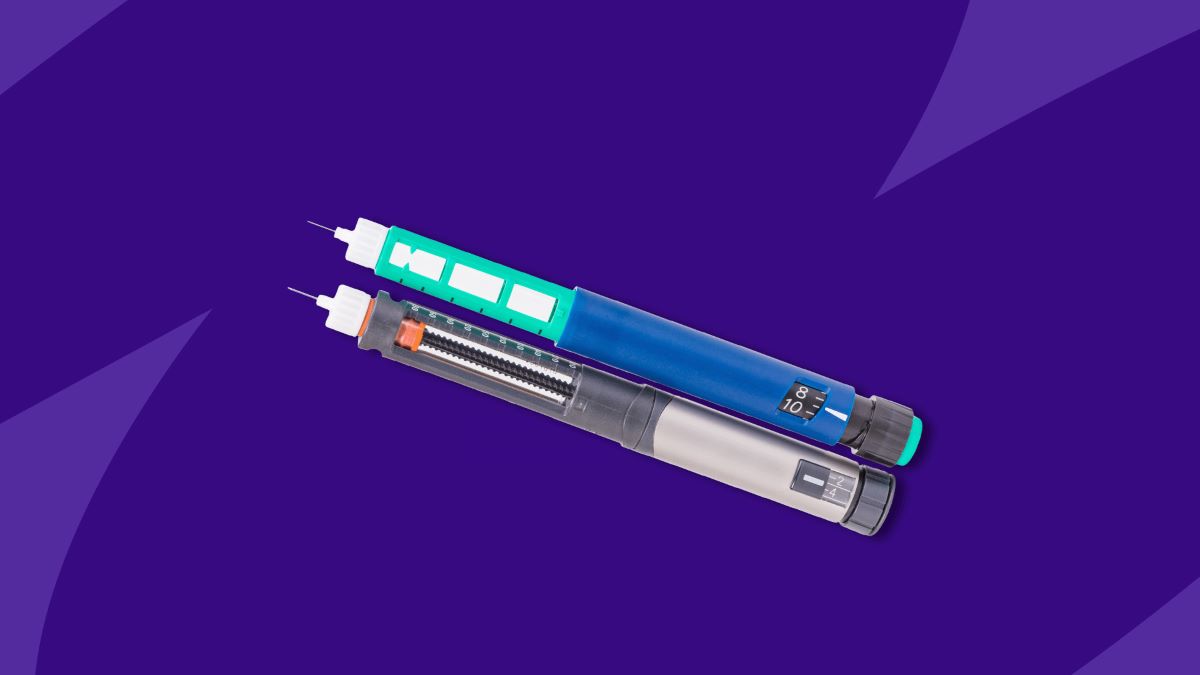

Finance
How To Get Ivig Covered By Insurance
Published: November 8, 2023
Learn how to get IVIG treatment covered by insurance with our comprehensive guide. Get the financial support you need for this life-saving therapy.
(Many of the links in this article redirect to a specific reviewed product. Your purchase of these products through affiliate links helps to generate commission for LiveWell, at no extra cost. Learn more)
Table of Contents
Introduction
When it comes to accessing healthcare treatments, navigating the world of insurance coverage can sometimes feel like a daunting task. This is especially true when it comes to specialty treatments such as Intravenous Immunoglobulin (IVIG) therapy.
IVIG therapy is a potentially life-saving treatment option for individuals with autoimmune disorders, immune deficiencies, and other conditions. However, the cost of IVIG can be quite expensive, often several thousand dollars per infusion. This is where insurance coverage becomes crucial, as it can significantly alleviate the financial burden for patients.
In this article, we will provide a comprehensive guide on how to get IVIG covered by insurance. We will walk you through the steps you need to take to ensure that you have the best possible chance of securing insurance coverage for IVIG therapy.
While the process may seem overwhelming, armed with the right knowledge and approach, you can increase your chances of successfully obtaining coverage for IVIG therapy. Let’s dive into the steps you can take to advocate for yourself or your loved one and secure the necessary financial assistance.
Understanding IVIG Coverage
Before embarking on the journey to get IVIG covered by insurance, it is important to have a solid understanding of how insurance coverage works for this specialty therapy. IVIG is classified as a specialty drug, and coverage policies can vary widely among insurance providers.
Insurance companies typically have specific criteria for determining whether IVIG therapy is medically necessary and eligible for coverage. This criteria often includes diagnostic requirements, such as specific diagnoses or laboratory test results, as well as treatment guidelines from professional medical organizations.
It is also essential to understand the different types of insurance coverage that may apply to IVIG therapy. This can include private health insurance, Medicare, or Medicaid. Each type of insurance may have its own set of coverage rules and requirements.
Additionally, insurance coverage may be subject to certain limitations, such as quantity limits, pre-authorization requirements, or the need for a specific infusion site or provider. These limitations can significantly impact access to IVIG therapy and the associated costs.
By familiarizing yourself with the specific coverage policies of your insurance provider and understanding the criteria they use to evaluate IVIG therapy, you will be better equipped to navigate the process and advocate for coverage.
In the next section, we will delve into the step-by-step process of getting IVIG covered by insurance.
Step 1: Know Your Insurance Policy
The first step towards getting IVIG covered by insurance is to thoroughly understand your insurance policy. This includes knowing your coverage details, limitations, and any requirements specific to IVIG therapy.
Start by reviewing your insurance policy documents, either in digital or physical format. Look for information on prescription drug coverage, specialty drug coverage, and any specific provisions related to IVIG therapy. Pay close attention to any coverage criteria, pre-authorization requirements, and information on in-network providers.
If you are unsure about any aspect of your insurance policy, don’t hesitate to reach out to your insurance provider’s customer service department. They can help clarify any questions or concerns you may have regarding IVIG coverage.
Additionally, it’s important to understand the cost-sharing provisions of your policy. This includes deductibles, co-pays, co-insurance, and out-of-pocket maximums. Knowing how much you may be responsible for paying out-of-pocket can help you plan financially and seek additional assistance if needed.
Be aware that insurance policies can change over time, so it’s important to stay updated on any changes in coverage or requirements. Stay in touch with your insurance provider and regularly review your policy documents to ensure you have the most accurate and current information.
Once you have a clear understanding of your insurance policy, you can proceed to the next steps in advocating for IVIG coverage.
Step 2: Gather Supporting Documentation
In order to increase your chances of getting IVIG covered by insurance, it is essential to gather all the necessary supporting documentation. This documentation will help demonstrate the medical necessity of the therapy and support your case for insurance coverage.
Start by collecting and organizing your medical records related to your condition and the need for IVIG therapy. This can include diagnostic test results, specialist consultations, treatment history, and any relevant progress notes or reports. These records should clearly show the medical necessity and effectiveness of IVIG therapy in managing your condition.
In addition to medical records, it can be beneficial to gather research articles, published studies, or clinical guidelines related to the efficacy of IVIG therapy for your specific condition. This evidence can further strengthen your case for insurance coverage by demonstrating the widespread recognition and acceptance of IVIG as an effective treatment option.
Obtaining a letter of medical necessity from your treating physician is also crucial. This letter should outline the specific medical reasons why IVIG therapy is necessary, detail the failed alternative treatments if applicable, and explain the expected benefits and outcomes of the therapy. The letter should be comprehensive and persuasive, addressing any potential concerns or objections from the insurance company.
It may also be helpful to gather any additional supporting documentation, such as letters of support from other healthcare providers or testimonials from individuals who have benefited from IVIG therapy. These documents can provide a well-rounded perspective on the necessity and effectiveness of the treatment.
Make sure to keep copies of all your supporting documentation for your own records and submit them as needed throughout the insurance coverage process.
By gathering comprehensive and persuasive supporting documentation, you can present a strong case to your insurance provider and increase the likelihood of getting IVIG covered.
Step 3: Consult Your Physician
One of the most important steps in getting IVIG covered by insurance is consulting with your treating physician. Your physician plays a critical role in advocating for the medical necessity of IVIG therapy and can provide valuable insights and support throughout the process.
Schedule an appointment with your physician to discuss your treatment options and the potential benefits of IVIG therapy. The physician can assess your medical history, review any supporting documentation you have gathered, and provide their professional opinion on the appropriateness of IVIG therapy for your specific condition.
During the consultation, it is important to ask your physician to provide clear and detailed documentation of the medical necessity of IVIG therapy. This can include a thorough explanation of your condition, the treatment protocol, and the expected outcomes. Your physician’s support and expertise will greatly enhance your case for insurance coverage.
Additionally, your physician can assist you in completing any necessary insurance forms or prior authorization requests. They may have experience dealing with insurance companies and can provide guidance on how to navigate the process effectively.
Establishing a strong and open line of communication with your physician is crucial. Keep them informed of any updates or changes in your insurance coverage and involve them in any appeals or discussions with the insurance provider. Their expertise and support can go a long way in securing insurance coverage for IVIG therapy.
Remember, your physician is your advocate in this process. Collaborate with them to develop a comprehensive and compelling case for IVIG coverage, ensuring that your medical needs are addressed and supported throughout.
Step 4: Submit a Prior Authorization Request
Once you have gathered all the necessary documentation and consulted with your physician, the next step in getting IVIG covered by insurance is to submit a prior authorization request to your insurance provider. Prior authorization is the process by which insurance companies evaluate the medical necessity of a treatment before providing coverage.
Start by obtaining the prior authorization forms from your insurance provider. These forms can typically be found on their website or requested through their customer service department. Carefully read through the instructions and requirements to ensure that you provide all the necessary information and documentation.
As you complete the prior authorization request form, be sure to include all relevant supporting documentation that demonstrates the medical necessity of IVIG therapy. This can include your medical records, physician’s letter of medical necessity, and any additional research articles or testimonials that strengthen your case.
Provide clear and concise information on your diagnosis, previous treatment attempts, and any potential risks or complications that may arise from not receiving IVIG therapy. Be thorough and detailed in explaining the impact of the condition on your quality of life and the potential benefits you expect from IVIG treatment.
Once the prior authorization request is complete, submit it to your insurance provider according to their specified procedure. Keep records of the submission, including date sent, method of submission, and any confirmation or reference numbers provided by the insurance company.
Be prepared for the possibility of additional requests for information or clarification from the insurance company. Stay in close communication with your physician and respond promptly to any inquiries to ensure a smooth and timely review process.
Remember, the prior authorization process can take time, and it is important to be patient and persistent. Follow up with your insurance provider regularly to inquire about the status of your request and advocate for a timely decision.
By submitting a thorough and well-documented prior authorization request, you increase the chances of getting IVIG therapy covered by your insurance provider.
Step 5: Appeal a Denied Claim
If your prior authorization request for IVIG therapy is denied by your insurance provider, don’t lose hope. You have the right to appeal the decision and present additional evidence to support your case. The appeals process is an important step in advocating for insurance coverage for IVIG therapy.
Start by reviewing the denial letter from your insurance provider. Pay close attention to the reasons for denial and any specific requirements for the appeals process. Understanding the insurance company’s rationale for denial will help you address their concerns more effectively.
Consult with your treating physician and gather any additional supporting documentation that may strengthen your case. This can include updated test results, progress notes, or research articles that further support the medical necessity and effectiveness of IVIG therapy.
Next, write a strong and persuasive appeals letter to your insurance provider. Clearly state the reasons why you believe the denial was unjustified and provide a thorough review of the supporting evidence. Address each reason for denial individually and present counterarguments and additional documentation to refute them.
Ensure that your appeals letter is well-organized, concise, and respectful in tone. Clearly articulate the impact of the denial on your health and well-being, emphasizing the potential negative consequences of not receiving IVIG therapy.
Submit your appeals letter, along with any additional supporting documentation, to your insurance provider as per their specified appeals process. Keep records of the submission, including dates, confirmation or reference numbers, and any communication with the insurance company during the appeals process.
Be prepared for the possibility of multiple levels of appeals, depending on the procedures outlined by your insurance provider. Each level may require additional documentation, appeals letters, or even a formal hearing. Stay diligent and persistent throughout the process, and seek guidance from patient advocacy groups or legal professionals if needed.
Remember, the appeals process can be lengthy and challenging, but it offers an opportunity to present your case and advocate for the insurance coverage you deserve. Don’t give up, and continue to fight for your right to access IVIG therapy.
Step 6: Seek Financial Assistance Programs
If obtaining insurance coverage for IVIG therapy proves to be challenging, there are financial assistance programs available that can help alleviate the financial burden. These programs are designed to provide support to individuals who may face difficulties paying for their medical treatments, including IVIG therapy.
Start by researching and identifying financial assistance programs that are specifically tailored to your condition or the type of treatment you require. Many pharmaceutical companies offer patient assistance programs that can provide financial support or discounts on the cost of IVIG therapy.
Reach out to these programs to inquire about eligibility criteria, application processes, and the types of financial assistance they provide. Be prepared to provide detailed information about your financial situation and medical needs.
In addition to pharmaceutical programs, there are also nonprofit organizations and foundations that offer grants or financial assistance to individuals in need of medical treatments. These organizations may have specific criteria or application processes, so make sure to thoroughly research their requirements.
If you are unable to access or qualify for these programs, consider exploring crowdfunding platforms or community fundraisers. These platforms allow you to share your story and seek financial support from friends, family, and even strangers who may be willing to contribute to your IVIG therapy expenses.
Lastly, consult with a financial advisor or social worker who specializes in healthcare financing. They can provide guidance on navigating insurance coverage and identifying further financial assistance options.
Remember, seeking financial assistance programs can greatly reduce the financial burden of IVIG therapy and increase your access to this important treatment. Be proactive in exploring these options and don’t hesitate to ask for help.
Conclusion
Navigating the process of getting IVIG covered by insurance can be challenging, but with perseverance and knowledge, you can increase your chances of obtaining the necessary coverage. Understanding your insurance policy, gathering supporting documentation, consulting with your physician, submitting a prior authorization request, appealing a denied claim, and seeking financial assistance programs are all crucial steps in advocating for IVIG therapy coverage.
By familiarizing yourself with your insurance policy, you can understand the coverage criteria and any limitations that may apply to IVIG therapy. Gathering comprehensive supporting documentation, including medical records, research articles, and a letter of medical necessity, strengthens your case for coverage.
Consulting with your physician ensures that their expertise and support are utilized in developing a compelling case for IVIG therapy. Submitting a prior authorization request and following the appeals process diligently gives you the opportunity to present your case and address any concerns raised by the insurance provider.
Finally, exploring financial assistance programs can provide crucial financial support for IVIG therapy. Researching pharmaceutical patient assistance programs, nonprofit organizations, and crowdfunding platforms can help alleviate the financial burden associated with this specialized treatment.
Remember, advocating for IVIG coverage may involve persistence and patience, but it is a vital part of accessing the life-changing benefits of this therapy. Stay informed, be proactive, and seek support from patient advocacy groups, healthcare professionals, or legal experts if needed.
While the process may be challenging, the potential benefits of IVIG therapy make the effort worthwhile. With determination and the right approach, you can increase your chances of getting the insurance coverage you need to receive this essential treatment.














